Because there is no other world on which to dwell, live green!
It’s crucial to effectively secure packages, make them as safe as possible, and ensure they look their best. One of the quickest and most straightforward improvements you might drive right now is to switch to brown paper tape, often known as water-activated tape. There are numerous options available for creating positive changes inside your company.
Packing tape is one of the essential components of the packaging sector. Packing tape holds things together while they are processed, stored, or transported. Their composition, durability, thickness, width, and other characteristics also differ. Given the wide range of options available, selecting the ideal tape for your business’s requirements could be difficult.
Brown Paper Tape can be perfect for your company if you seek alternatives to plastic tape, whether you want a little more security, a better appearance, or to help the environment.
ARE YOU USING THE RIGHT “BOX PACKING TAPE” FOR PACKAGING IN YOUR BUSINESS?
Following the most recent green initiatives, we are eliminating and refraining from using plastic bags and straws. Consequently, it is also necessary to stop using plastic tape for packing. Consumers and businesses should switch to paper tape since it is more environmentally friendly than plastic packaging. Eco-friendly packaging is easy to recycle and safe for people and the environment. It uses as many recycled or renewable resources as possible to generate sustainable energy. It is frequently referred to as green packaging or sustainable packaging.
Regarding leading a green lifestyle, the tape is not something we consider. But we can experience it repeatedly throughout our lives, from sending and receiving packages to wrapping presents for special occasions and holidays to removing the roll for routine office work. There are many different types of tape that cannot be recycled unless they are made of paper. However, more environmentally friendly tapes are available, many of which are composed of paper and other biodegradable materials. Paper tapes are a more environmentally friendly solution and typically come in two varieties: non-reinforced for lighter items, kraft paper with adhesive, and reinforced for heavy packages, which include fiberglass strands. Paper tape is also known as gummed paper, paper packing, and brown paper.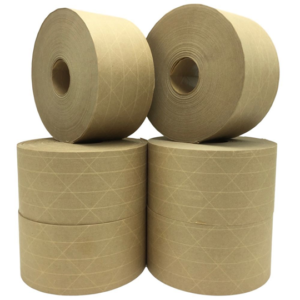
The environment has an impact on box packing tape in several ways. You must carefully consider how your products will be transported and stored to select the correct type of tape. Environmental elements such as humidity, temperature, and others will make your tape more sticky and degrade the quality of your package. If you choose the wrong kind of packing tape for your workplace, it could harm your items. Additionally, having to reseal damaged boxes takes time away from other tasks in the warehouse.
Therefore, choosing the right type of packaging tape plays an essential part. It safeguards the item, protects them, and keeps up with the importance of the brand. This article will discuss the importance of packaging tape in the packaging of products.
Understanding the Basics of Packaging Tape
Online retailers offer a variety of packaging tapes, each with a different core size, length, strength, breadth, and other characteristics. One must exercise caution when selecting the best kind of tape for their purposes.
Consumers frequently use packaging tape in domestic and professional contexts, including shops, factories, and warehouses. Given its durability and strength, packaging tape is undoubtedly the best option for sealing or resealing cardboard boxes for shipping or storing large products, including moving boxes. It is applied to the joints to secure and seal the cardboard box during transit and delivery. Additionally, it is perfect for securing packages and packaging, strengthening containers, and securing numerous boxes, packs, or supplies on industrial pallets.
Even though it seems uncomplicated, packing takes much work. As a crucial element of packaging that reinforces and protects your product, the tape you use for packaging must be appropriately chosen.
The following information will help you choose the appropriate type of box packing tape for your package’s contents and the available different types:
1) Core Size
A core is a ring of cardboard or other material positioned in the center of a roll to give stability while winding up die-cut materials. Simply put, it is what remains after all of the tapes on a roll have been used. There are numerous core varieties, including plastic and cardboard ones, printed and unprinted ones, ones with different heights, widths, and diameters, and labels for the cores. The core size can determine the diameter of the tape’s inner side. You may require tape with a bigger diameter if you are packaging a large item. As a result, it is a crucial component in packaging.
2) Length
For packing and sealing cardboard boxes and other packaging for shipping or storage, packaging tapes must be sufficiently long, sturdy, and dependable. Hence, choosing the correct length of tape for your packaging becomes imperative. If you purchase a tiny amount of tape to package an enormous object, it will not be long enough. Wrapping the item or box wouldn’t be sufficient in that situation. Therefore, it is best to have the correct length of tape before making a purchase. Depending on their size, you can measure these tapes in centimeters, meters, or even yards.
3) Thickness
You must pack effectively and securely if you want your products to arrive as promised, whether you are shipping a retail product to numerous consumers, packing your creative work, or simply sending a heartfelt present to your loved ones. You should therefore select packaging tape with the appropriate thickness for the task. The tape with the maximum thickness is the one that functions best for product packing. Packaging tape thickness is measured in mils and milli-inches.
4) Width
The breadth is a crucial characteristic by which packing tapes differ. The majority of packing tape has a width of two to three inches. The 2″ wide tape is adequate for packing small to medium-sized boxes. However, the 3″ would be the most suggested option for large boxes because it will offer superior security and stickiness. It is often measured in millimeters and inches.
5) Elongation
Elongation is a measurement of how far a tape may stretch without rupturing. Elongation, measured in percentages, is a valuable indication of how a tape responds to the ongoing stress of being stretched. It is calculated by extending the percentage, or the maximum amount of the tape that can be pulled. The rate has a range of 0% to 100%.
6) Backing Material
Any thin material covered with adhesive can be used as an adhesive backing to create tape and objects that resemble tape. Its primary function is to offer strength to the bond and provide the adhesive a form so that it can be applied easily. An adhesive tape backing is a relatively thin, flexible web-based material with an adhesive. The most popular kind of backing material is vinyl. The other two examples are linen and propylene.
7) Tensile Strength
A mechanical test on packaging materials, known as a tensile strength test, can identify rips or the maximum load given to a material before it ruptures. Paper, board, and plastics are effectively “pulled” to assess their strength. A material must have the specific tensile strength to split a piece of tape in half. Higher tensile strength would make it harder to break the tape. Tensile strength is commonly measured in pounds.
Types of Packaging Tape
Regarding packaging, specific tools are required to secure the package boxes firmly. Multiple valuable items, like tapes, strapping tools, and more, are helpful in such circumstances. These tapes provide a firm grip and an impeccable finish at the end of the packaging. Because of each of its unique characteristics, these kinds of packaging tapes are extensively used in the packaging industry:
1) Custom-printed Tape
Using custom-printed tape may increase brand recognition by ensuring that your logo is visible from the moment the carton leaves your facility until it reaches the customer. The value of your brand will increase if you use these personalized tapes for advertising your packaging and brand. Sending packages with customized tape will help your business stand out from the crowd. Usually, it makes the tape more appealing and sets it apart from other packaging tapes. It is built in different colors and fonts, depending on your specifications. Custom-printed tapes are now a popular choice among many businesses.
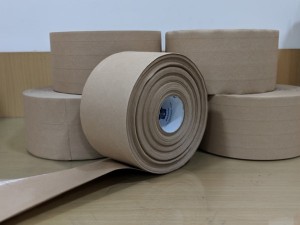 2) Water-activated Tape
2) Water-activated Tape
Paper-based water-activated tape (WAT) has an adhesive that is dry to the touch until water activates it. The dry glue is transformed by water into a sticky, fluidic adhesive that adheres to corrugated boxes. In contrast to other tapes on the market for packaging, water-activated tape specializes in the secure closure of corrugated boxes. There are versions of water-activated tape that are both reinforced and unreinforced. The reinforced product is strengthened by adding reinforcement fibers, which are frequently made of polyester or fiberglass. The strengthening improves the tape closure’s longevity and is perfect for boxes intended for parcel transportation.
3) Cold-temperature Tape
Cold-temperature tapes for low-temperature environments are your best option when dealing with frigid regions or scenarios. It is primarily utilized as a packing material to pack boxes in cold and moist environments. Low temperatures and high moisture content can harm carton-sealing tape’s stickiness, rendering it ineffective. Consider the possible temperature variations that your shipment boxes and packing tape can encounter. Due to environmental conditions like moisture, humidity, and others that may alter how sticky the tape is, the quality of your item may deteriorate. Hence, using cold-temperature tape for your packaging becomes crucial.
4) Carton-sealing Tape
Carton-sealing tape is the tape that is used the most commonly. It is mainly used to assemble various containers or to pack numerous boxes. There are now recyclable carton-sealing tapes available as well. This is the best choice if you only need essential shipping and packing services. Corrugated cardboard boxes keep their shape and securely hold their contents when properly sealed with carton-sealing tape. Since they are used to seal containers, carton-sealing tapes must have an acceptable adhesive system, backing strength, and other physical features.
5) Strapping Tape
A pressure-sensitive tape known as filament or strapping tape has fiberglass filaments incorporated to give it a high tensile strength and a pressure-sensitive adhesive put onto a backing material that is often a polypropylene or polyester film. Strapping tape works well for various general-purpose tasks, including bundling, holding, attaching, strengthening, and fastening. They are utilized, in essence, for more extensive, heavier operations when greater tape strength is required. Various materials can be used to reinforce strapping tape. Because it is constructed of polypropylene and glass fiber, the tape is more effective and robust.
6) Pressure Sensitive Tape
A strip of fabric, paper, metal, or plastic can be used as pressure-sensitive adhesive tape if it has persistently tacky adhesive on at least one side of the material. Permanently sticking this adhesive at room temperature is advised but not required. PSA tape, which is constantly sticky, adheres to a specific surface when applying a small amount of pressure. PSA will stick to various materials, including paper, glass, wood, plastic, and metal, when applied to clean, dry surfaces with only fingers or slight hand pressure. Because of its ease of use, low cost, and advancements, PSA will continue to gain popularity as a fastening and joining method.
7) Acrylic Packaging Tape
The packaging tape of acrylic adheres to various surfaces and withstands significant humidity and temperature variations. Acrylic adhesive offers mild initial tack and solvent resistance. Acrylic packing tape is suitable if you operate in a profession where you frequently handle corrugated boxes. It can adhere to surfaces with corrugations with little force. This explains why box tape and carton-sealing tape are other names for acrylic packing tape. Acrylic tapes provide several advantages, including UV resistance, good clarity, the ability to perform admirably in scorching and frigid environments, and low cost. These tapes can be applied manually or with the aid of a machine, making them durable, adaptable, and a fantastic choice for a wide range of packaging applications.
8) Hot-melt Packing Tape
High-volume applications are used in the production of these hot melt tapes. Every time they are put in the desired location, they enable reliable seals. This strong tape has a potent stick factor, is simple to unroll, and functions admirably under pressure. These hot melt tapes stick to boxes and cartons in the same way that acrylic tape does, particularly those that include a lot of recyclable material. It is the most popular form of tape used in packing since it is economically reasonable. Typically, it is employed to seal containers. A specific kind of synthetic rubber provides its sticky property. It can pack material in more searing temperatures between 149°C to 288°C.
9) Natural Rubber Packaging Tape
Natural rubber packing tapes stand out among adhesive-backed tapes for their powerful adhesion qualities and are perfect for the most incredible range of surface conditions and high temperatures. They work well with recyclable boxes, coated and uncoated surfaces, and cartons that must be stored and transported in hot, humid, or cold conditions. Because it is constructed of natural rubber, it is recyclable and environmentally beneficial, just like paper tapes. They are a bit pricey because they are made of natural rubber but have excellent stickiness. Natural rubber tape can be used in locations with extreme temperatures, environments with high levels of humidity, or settings with much dust or airborne particles since it adheres to almost everything and can withstand these conditions. It has numerous uses indoors, including packaging glass and other brittle goods. The limited resistance of this tape to UV radiation is one drawback.
How to Properly Use the Tape for Packaging?
Packing tape is one of the most widely available packaging supplies, but it must be used carefully, or you risk making a big mess and wasting many tapes! Make the most of your use of packing tape with the help of the tips we have provided below.
- Use a tape dispenser to assist with the more uncomplicated packaging procedure. There are numerous tape dispensers available, one of which is water-activated. With the tape dispenser, cutting the tape is straightforward.
- Do not leave any overhanging tape when packing the box; use tape to fill in all the holes. Once you have sealed the containers, the next thing to do is assemble the boxes. Affirm that you have marked the side of your package that will be opened. Use specially printed tape to label your product with its name.
- Take the necessary measures while packing any fragile items. To prevent the package from opening, use tape with solid adhesive capabilities.
- To provide more security, apply tape to each corner. Add a second piece of tape to the borders to strengthen those folds.
- Make the proper markings on the package, such as “Open from Here,” “Package contains Fragile stuff,” and so on.
- Your product is now prepared for shipping because everything has been completed.
Options for Greening Your Business Using Eco-friendly Packing Tape!
No surprise that some of these tapes are effective, but you must convert to more environmentally friendly solutions, especially for your business, if you want to contribute to environmental preservation. We provide a wide selection of environmentally friendly boxes and packaging supplies at Packmile to substitute items like plastic bubble wrap and styrofoam. Polypropylene and Polyvinyl Chloride (PVC) are the most used types of plastic tape and are often less expensive than paper tape. Although it most frequently influences the first buying decision, it does not necessarily provide the complete picture of the goods. If you end up double-taping the package, you have used more material, paid more for labor, and produced more wasteful plastic that will end up in our landfills and oceans.
The paper tape options offered by Packmile are environmentally friendly and available in two varieties: Non-reinforced WAT made with kraft paper with adhesive for lighter items, and Reinforced WAT made with fiberglass strands for heavy packages. In conclusion, please consider using paper tape to lessen your plastic footprint and influence on the environment. Your customers will appreciate it, and you might be surprised by the ultimate cost.
These paper packing tapes are reliable, recyclable, and entirely biodegradable!
With Packmile, Make it Known that You are a Green Person!
Do you wish there was an environmentally friendly substitute for plastic packing tape? We are here to let you know that there are! We are happy to announce that there are various biodegradable packing solutions to select from, and we are here to discuss them with you today. Whether you run a small or large firm, switching to these environmentally friendly packing choices significantly impacts environmental preservation.
When choosing an adhesive tape for mending and sealing boxes, you can’t go wrong by choosing our paper tape. It is the most effective and secure method of packaging your items. Remember that our paper tapes are environmentally benign, providing peace of mind that you are contributing to the preservation of our environment. At Packmile, we work hard to satisfy your packaging requirements while being committed to forging enduring relationships. We work closely with each client to meet their unique packaging needs since we are committed to providing ecologically responsible packaging to all of our clients.
To avoid getting into a sticky situation with plastic tape, get in touch with Packmile regarding your packing tape requirements. The decision will not disappoint you!
About Company
“We were the first to employ environmentally friendly packaging materials in favor of single-use plastic, thermocol, and styrofoam. Several industries employ our products, including eCommerce, electronics, automotive, and spare parts. Reusable packaging options and eco-friendly packaging are our top priorities. We want to establish ourselves as a premier supplier of packaging products and materials for sustainable supply chains. Become the premier provider of packaging solutions for our customers. We are dedicated to educating those that require transport packaging about alternative packaging materials driven by innovation, client needs, and environmental concerns.”
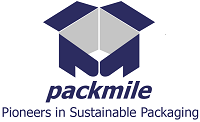
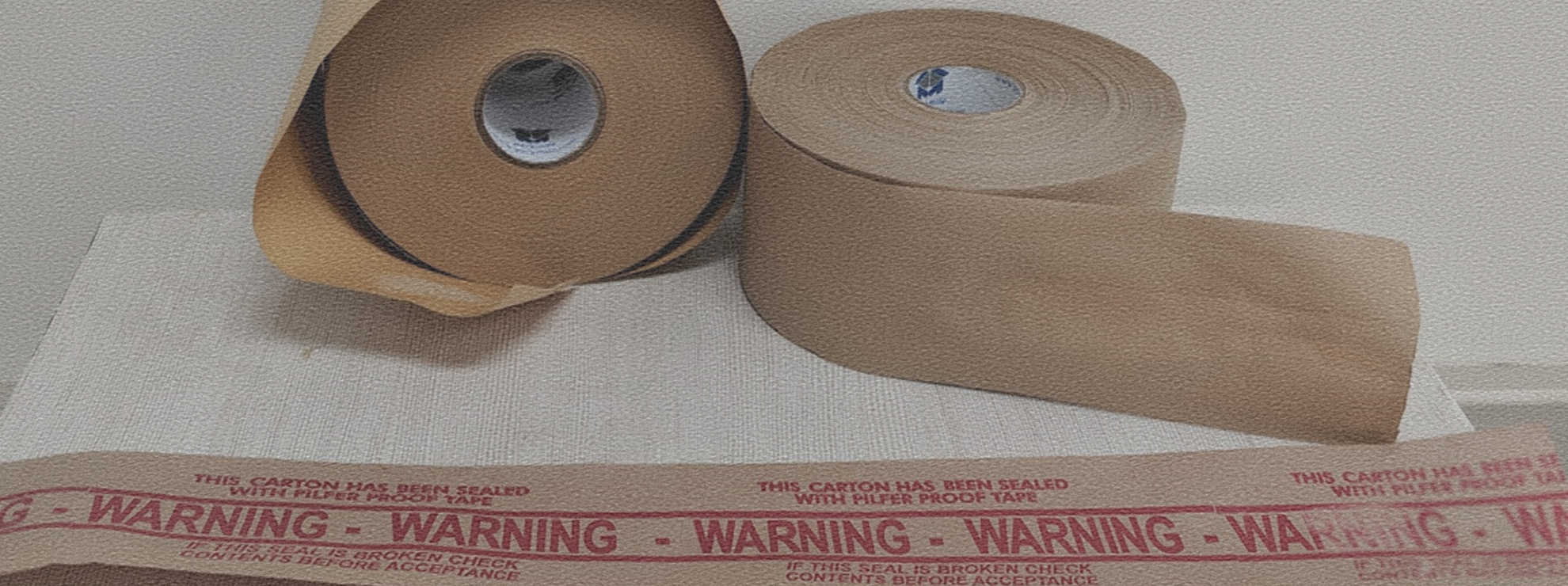
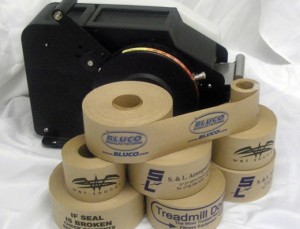
Leave A Comment